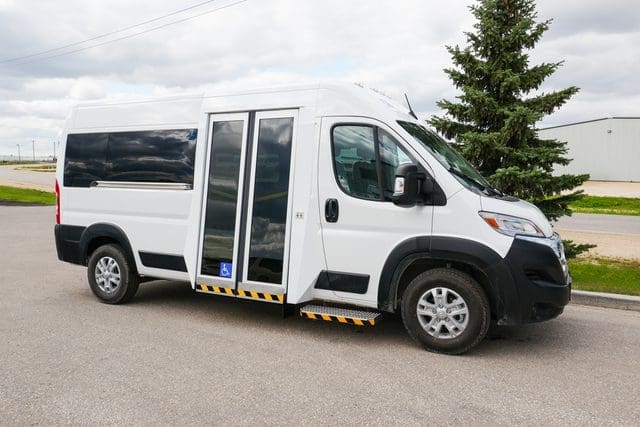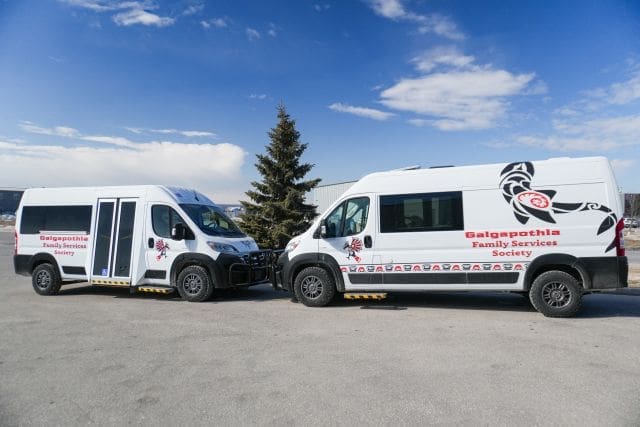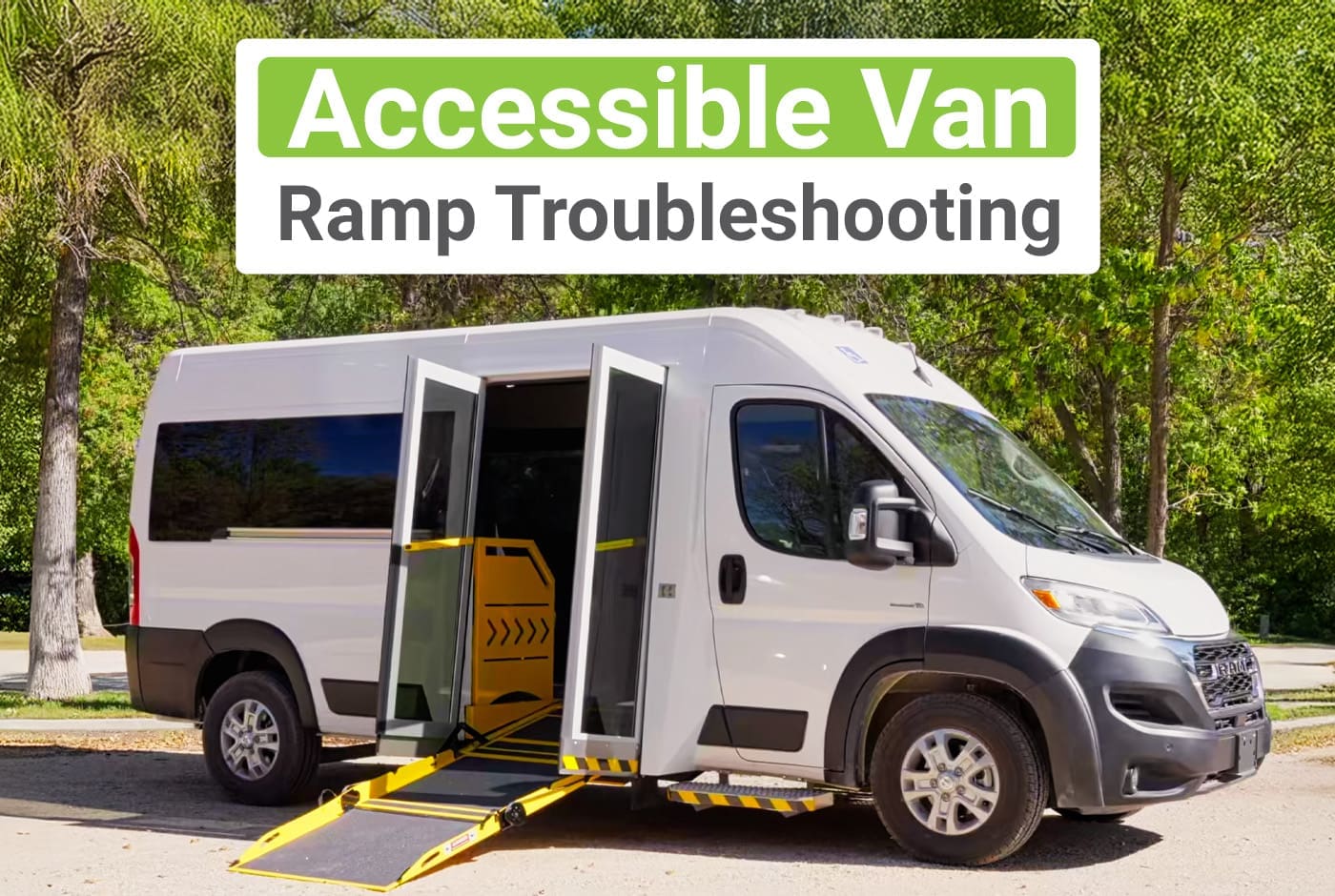Here’s a fact that might surprise you: over 6.2 million Canadians live with a disability. That’s a lot of people who potentially count on safe, accessible transportation every day. If you’re part of an organization that’s planning to get a new wheelchair van in the near future, you’re stepping up to make a real difference.
But one important thing that trips many people up is figuring out what licence you need to drive it.
If you’re stuck wondering, “Do we need an Ontario Class G or Ontario Class F licence for our wheelchair vans?” — you’re not alone. It’s a really common question. And if you guess wrong, it could mean:
- Fines or legal headaches
- Delays getting your van on the road
- Frustration for you and your team
Au MoveMobilityNous avons construit fourgons pour fauteuils roulants et véhicules médicaux mobiles depuis plus de 20 ans. We work with organizations across Canada to break down barriers to healthcare and transportation. While we’re proud of what we build, this article is about giving you the facts, not a sales pitch.
After reading this article, you’ll have a better idea of the differences between Class G and Class F licences and which ones you need for your next wheelchair van.
What is an Ontario Class G licence for wheelchair vans?
If you’re considering driving a wheelchair van in Ontario, chances are you’ve heard about the Ontario Class G licence. But what does it really cover?
A Class G licence lets you drive most regular vehicles, including some wheelchair vans, as long as they fit certain regulations.
Here’s what you can drive with a Class G:
- Regular cars, vans, and SUVs
- Small wheelchair vans that carry up to 11 people total (including the driver)
- Vehicles under 11,000 kg (about 24,000 pounds) gross weight
Good to know: If your wheelchair van is about the size of a regular van or minivan, and it’s set up for just a few passengers, Class G usually covers it.
But, and here’s the important part, once you get into larger vans that carry more than 10 people, or have heavy-duty conversions, Class G might not be enough anymore.
Quick example: If you’re running a small community program with a minivan that seats a driver and three wheelchair users, a Class G is probably perfect. If you’re transporting a whole group of 12, you might need to think bigger (we’ll talk about that next).
What is an Ontario Class F licence for wheelchair vans?
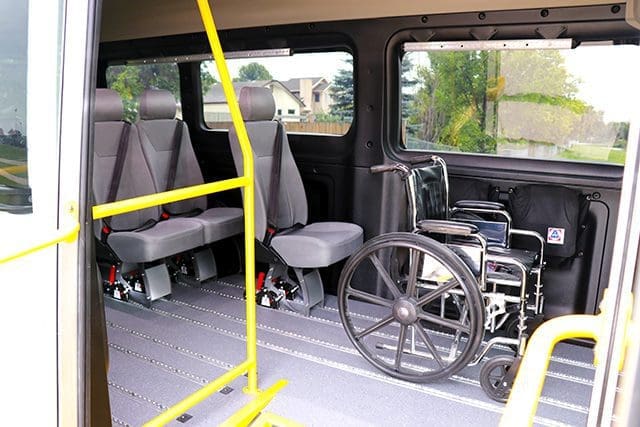
Now let’s talk about the bigger side of things: the Ontario Class F licence.
A Class F licence lets you drive larger vehicles that carry more people, such as RVs or buses.
Here’s what you can drive with a Class F:
- Vans or buses carrying 10 to 24 people (including the driver)
- Some bigger wheelchair vans and accessible shuttles
- Vehicles under 11,000 kg (gross weight)
Good to know: If your wheelchair van is much bigger, carries more than 10 passengers, or looks more like a mini-bus than a regular van, you’ll likely need a Class F licence.
Quick example: If your organization uses a larger wheelchair van that seats one driver, six wheelchair users, and seven support staff, you’re in Class F territory.
Important: To get a Class F licence, drivers also need a medical exam and must meet stricter road test rules than Class G drivers. It’s a few more steps, but they ensure everyone’s safety on the road.
Next, let’s look at how to figure out what licence you need to drive a wheelchair van based on your specific van and passengers.
How do you figure out what licence you need to drive a wheelchair van in Ontario?
Now that you know what an Ontario Class G and an Ontario Class F licence covers, how do you figure out which one vous need for your wheelchair van?
Here’s the easiest way to think about it:
Count your seats:
- If your van carries nine people or fewer (including the driver), you can drive it with an Ontario Class G licence.
- You’ll need an Ontario Class F license if your van carries 10 to 24 people.
Check your van size:
- Small wheelchair vans, like a Dodge Grand Caravan or Toyota Sienna? Class G.
- Bigger vans, like Ford Transit ou Ram Promaster? Still usually Class G, because they stay under the weight limit and seat fewer than 10 people.
- Bigger vehicles that can seat over 10 passengers and still fall under the 11,000 kg weight limit require a Class F.
Think about the use:
- Family wheelchair vans or small group rides? Class G.
- More extensive group transportation for seniors, day programs, or community shuttles (with 10+ seats)? Class F.
Quick tip: It’s not about the type of van. It’s about how many seats it has. Even if you only use a few seats, it’s about how many it peut carry.
When in doubt: Check the van’s ownership registration for seating numbers, or ask your van provider (like us at MoveMobility: we help people figure this out every day).
Next, let’s go over common mistakes people make when choosing the wrong licence — and how you can avoid the headaches.
Class G vs. Class F: Common mistakes to avoid
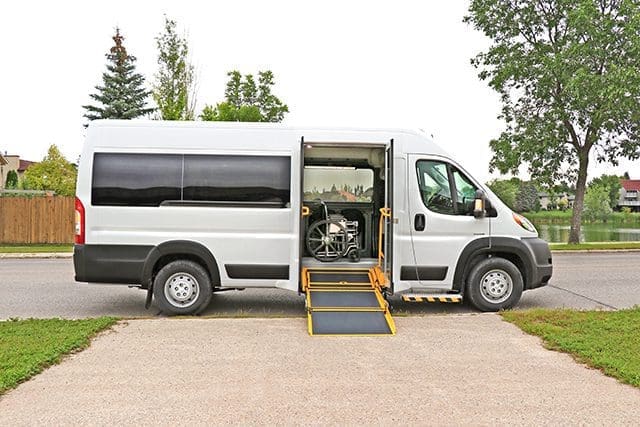
Even with the best intentions, it’s easy to make mistakes when figuring out what licence you need to drive a wheelchair van.
Here are some of the most common slip-ups we see, and how you can steer clear:
Guessing based on van size: Just because a van looks big doesn’t mean it needs a Class F licence. Ford Transits and Ram Promasters with up to 10 seats, for example, still fall under Class G rules.
Only counting the passengers you have: It’s not about how many people you plan to drive today. It’s about how many seats the van is built for. If it can hold 10 or more people, you need a Class F licence, even if only five people are riding.
Missing the weight rule: Both Class G and Class F licences cover vehicles up to 11,000 kg. If your wheelchair van somehow goes over that, you’re looking at a whole different licence altogether (and a very heavy van!).
Forgetting about medical checks: Drivers getting a Class F licence have to pass a medical exam. Skipping this step can cause major delays when you’re trying to get rolling.
Assuming family-use rules apply to organizations: A personal-use wheelchair van has different rules than a van used for a community group, retirement home, or medical transport. Always check based on how you’re using the van.
Bottom line: When in doubt, ask. Our team at MoveMobility helps organizations figure out these details every day, so you don’t have to take a wild guess and hope for the best.
Let’s do a quick side-by-side comparison of Ontario Class G vs. Class F licences to make things even easier to remember.
Ontario Class G vs. Class F quick comparison for wheelchair vans
| Licence type | What you can drive | Number of people allowed | Vehicle weight limit | Special requirements |
| Ontario Class G | Regular cars, vans, SUVs, small wheelchair vans | Up to 11 (including driver) | Up to 11,000 kg | Standard road test |
| Ontario Class F | Larger vans, accessible minibuses, bigger wheelchair vans | 10 to 24 (including driver) | Up to 11,000 kg | Medical exam + stricter road test |
Got any questions about Ontario Class G vs. Class F licence requirements?
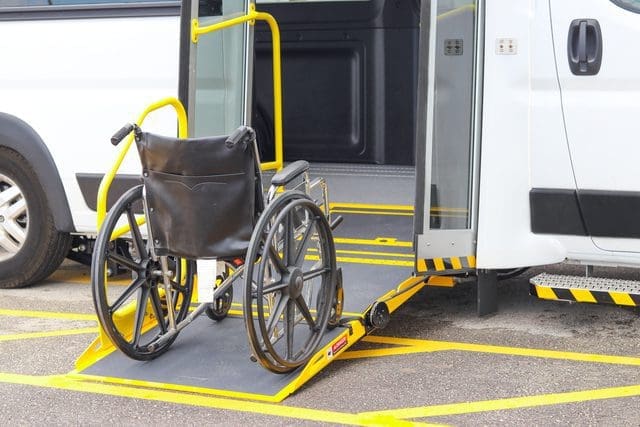
When you first clicked on this article, you probably had one big question: “Do we need an Ontario Class G or Ontario Class F licence for our wheelchair van?”
You wanted clear answers because guessing wrong could cause major delays, extra costs, or put your services at risk.
Now you know:
- Ontario Class G covers smaller wheelchair vans carrying up to 11 people.
- Ontario Class F covers larger vans carrying 10–24 people.
- It’s about seat count and weight, not just the size of the van.
Au MoveMobility, our experience helping organizations across Canada plan, build, and grow their transport accessible services means we understand the real challenges you face on the ground. We know your work changes lives, and that’s why every van we design is made to reduce barriers, protect your riders, and keep your team moving forward with confidence.
If you have any questions or you’re ready for expert assistance, click the button below to talk to a mobility expert—we’re here to help.
If you’re not ready to talk to a mobility expert yet, we have a few other resources you might want to check out to learn more.
Start by checking out our article or watching the video below comparing rampes et ascenseurs. This will help you decide which option makes the most sense.
Next, learn about some of the wheelchair van customization options that may benefit your team and your clients.


